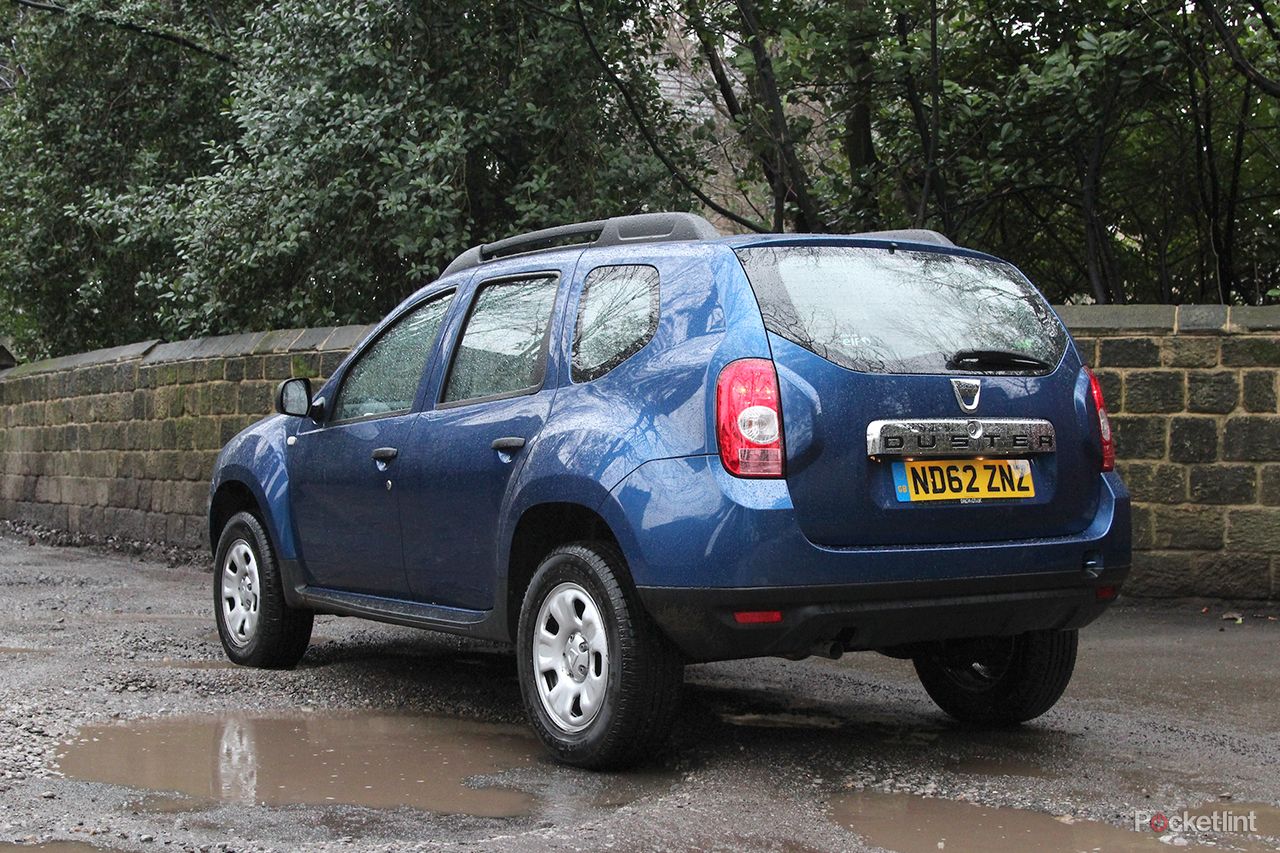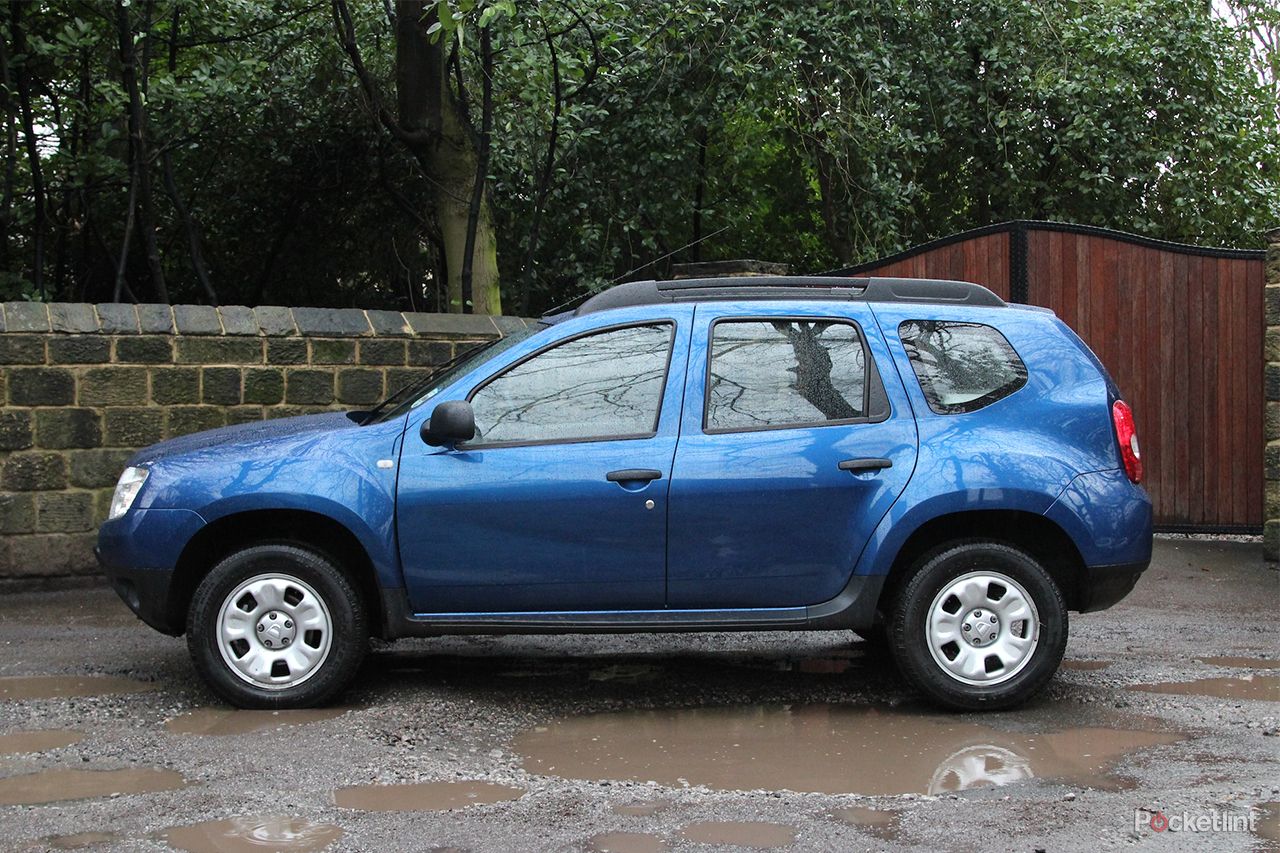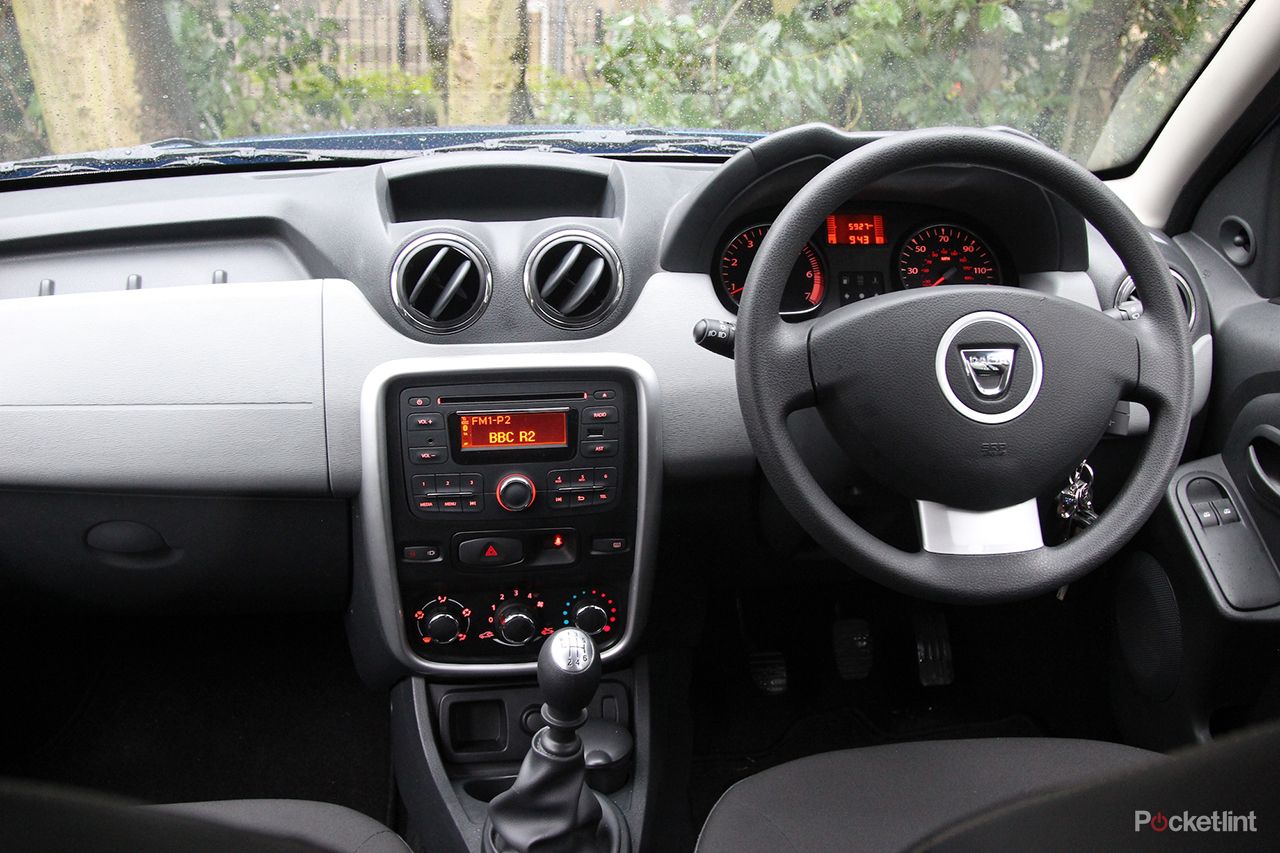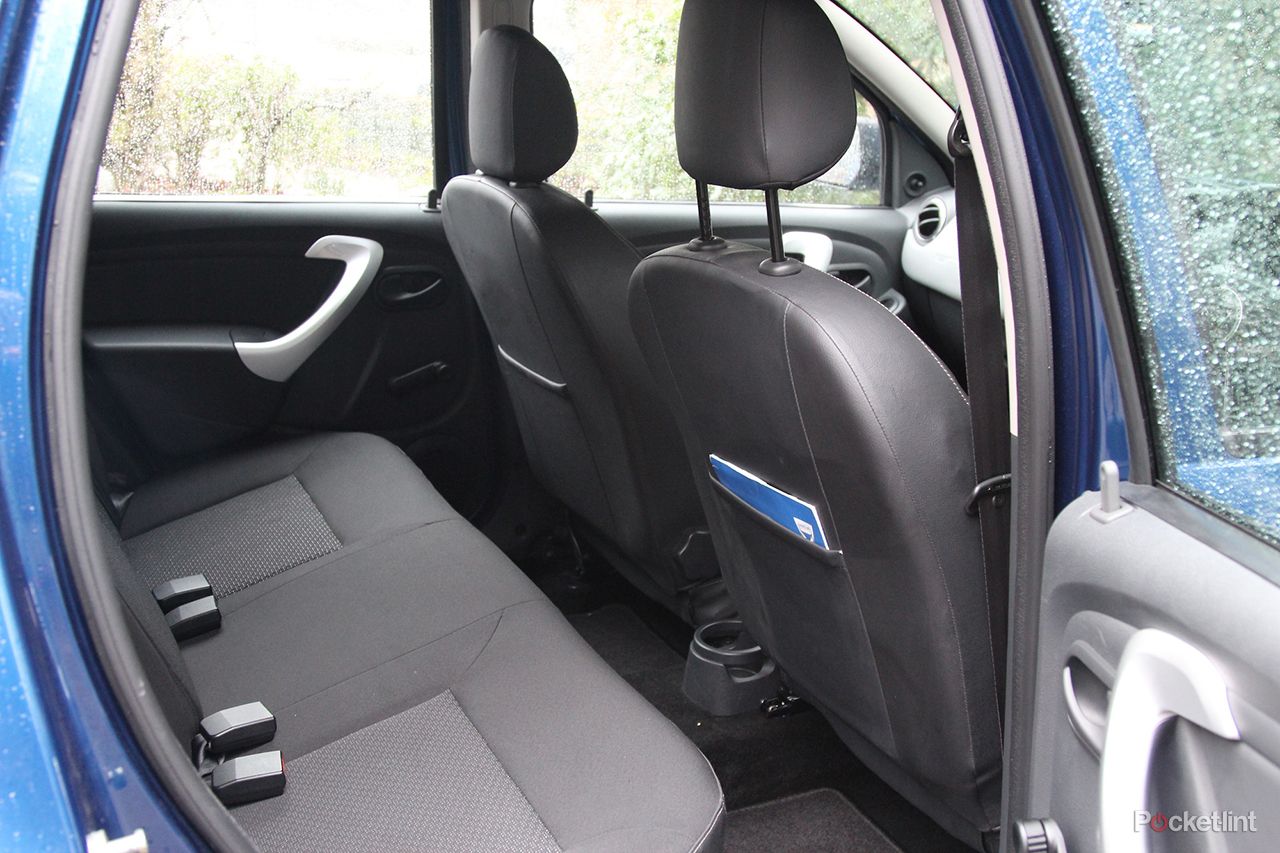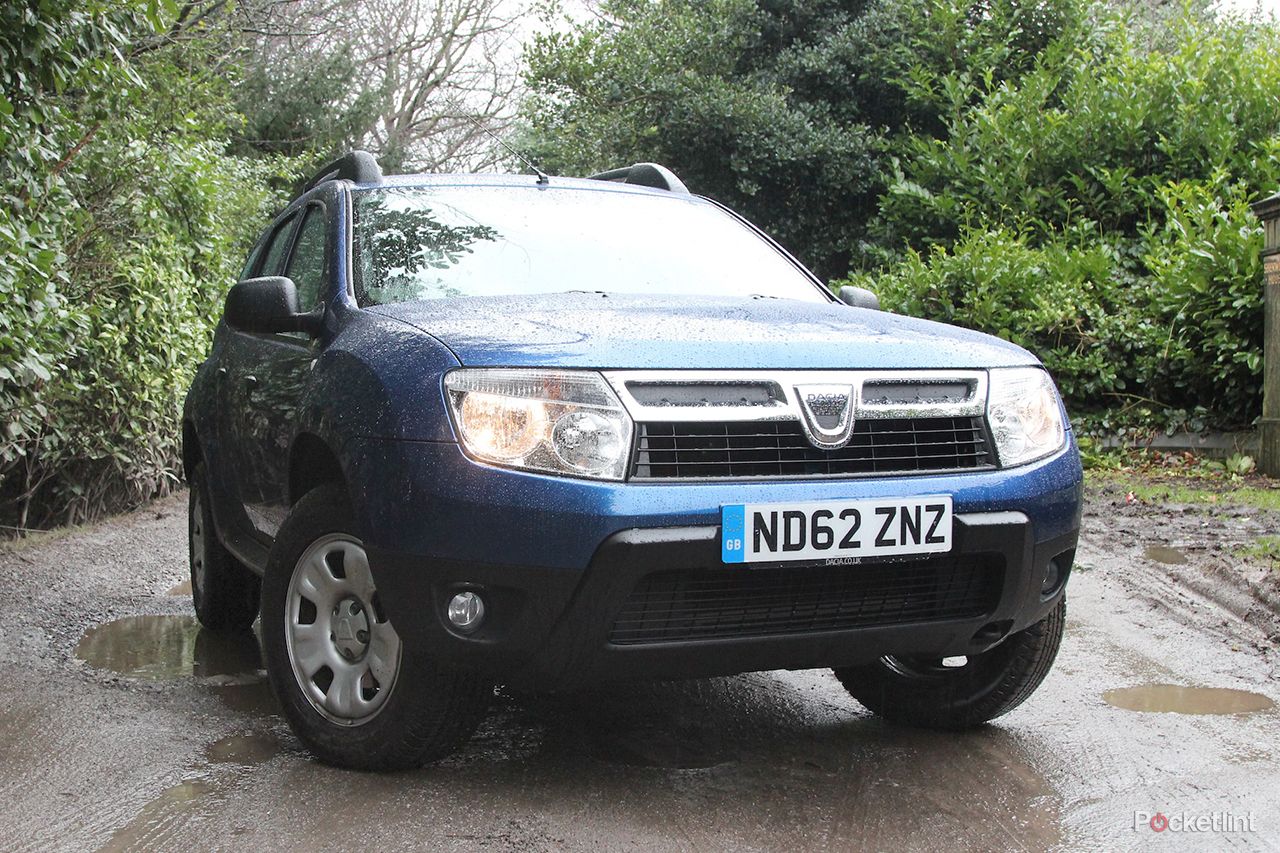Money. In 2014, it’s still a dirty word to some people. But in the case of the Dacia Duster Ambience dCi 110 4x2 that we’re testing here, money isn’t something you should be ashamed of talking about. Because when it comes to modern cars, you can cut the multitude of finance deals any way you like, but the truth is that cars are deeply expensive when bought new. A Ford Fiesta Ecoboost today costs £17,000. A mid-spec Golf is over £20,000. Whereas this Duster costs just £12,490 as tested or, with less trim options, starts at under the £9,500 mark.
Our quick take
Let’s cut to the chase: offer us a new VW Golf, or perhaps - with greater comparison on size-for-size - a new Nissan Qashqai instead of the Duster and we wouldn’t hesitate to grab the keys to the German or Japanese car in an instant. But that’s an unfair perspective to take because both will cost you thousands of pounds more upfront or hundreds more a month.
The Dacia Duster isn't about having "more" and treating yourself to motoring’s modern creature comforts. Instead it’s about honesty, authenticity and real bang-for-your-buck in terms of value and space. We suspect many a Duster buyer would have not even have considered buying a new car up to this point, because they would have considered it a waste of money.
Dacia’s winning card has been to create a reality where buying new is something that is not only possible, but makes decent financial sense. The Dacia Duster really does clear up where budget cars are concerned.
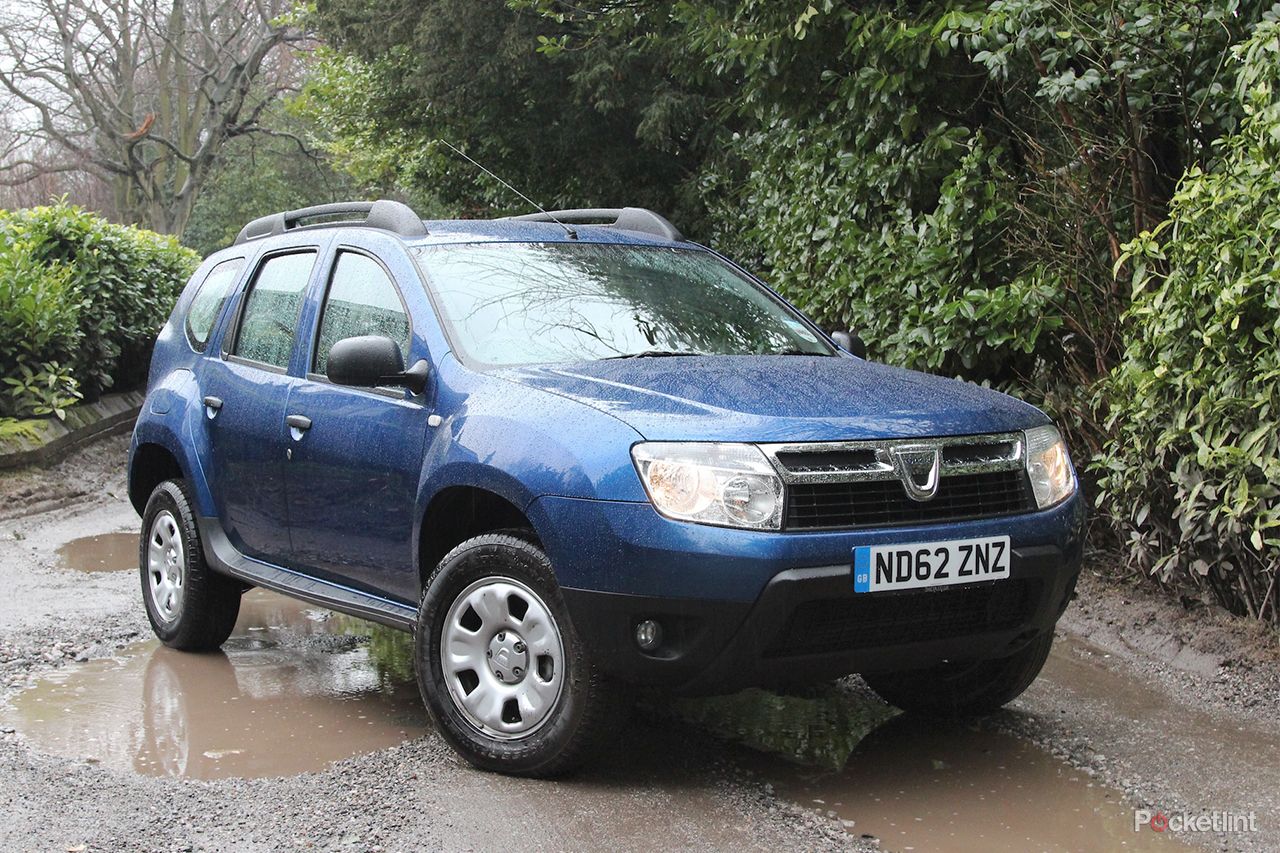
Dacia Duster - 4.0 / 5
| FOR | AGAINST |
|---|---|
|
|
Yes, we know you can get a decent used Porsche for £10,000 these days. Or a beautifully designed new VW Up!. But what if you want something that’s not going to cost you thousands a year in servicing and repairs? Or need something big enough to throw a family of four and all their clobber in for two week’s holiday? What if you want a three year warranty, some modern crash technology and even a smattering of on-board technology so you can answer phone calls and play your own music when on the move too? The Dacia Duster, as a space-meets-stuff value proposition, is right now untouchable if you want a new car on a budget.
A little bit of history
But who would buy a car from a brand they’ve never heard of? If you’re a car geek, Dacia might be on your radar. The smaller hatchback Sandero is the car that Top Gear presenter James May has been most excited about for years. But to many, Dacia will be an unknown quantity.
Fear not, because Dacia’s history is longer and much more reassuring than it seems. A Romanian brand, it’s been around for decades. And although it perhaps didn’t historically produce the most competitive cars, that all changed when Renault bought it in the 90s and quietly set about using proven Renault parts to create new Dacia models that it sold for cheap in emerging markets like Morocco and Russia.
The appeal of a non-image
That was over a decade ago, and two generations of product later you might have noticed a horde of Dacias roaming the streets in various parts of Europe. Not in the UK, though, as that's taken a little longer: eventually Renault’s overlords have been convinced the UK market might want in on the bargain of the moment, and brought the brand here in 2013.
Which is just one of the reasons why the Duster - also sold with a Renault badge in some parts of the world - was the Renault group’s best selling car worldwide last year. Over 400,000 buyers tells its own story. People want new and people want affordable.
What Renault and Dacia seem to have hit upon is a bit of an anathema in the car world: a "zero image" car. A new brand with no baggage, with a pure, no-nonsense ideology - transport as disposable white goods - which is designed to simply do the job, go un-noticed and offend nobody.
Yet in doing so, they’ve create a bit of a cult, because Dacia’s image is already transcending the "Japanese white goods" image reminiscent of Toyota and the like. It’s becoming shorthand for cool drivers who don’t need their cars to say anything special about them, because their lives are interesting enough thanks very much. And they know a good deal when they see one.
Dicing with Dacia
Which is all well and good, but that isn’t going to cut it on these pages if the Duster’s as homely as a concrete cell and drives like a wobbly blancmange.
On initial acquaintance, things don’t bode well. Step out of a new VW Golf - as we had the week before - and there’s a distinct lack of slush-moulded plastics. A notable absence of big, high-definition touchscreens. And a load of gaps and holes where - modern-day car thinking tells you - there should be buttons and functions that are critical to making your life a little easier and the car a nicer place to spend time.
What’s more, it’s easy to see where Dacia is saving money. If you drove the previous generation Clio you’ll recognise things like the indicator stalks and door handles. The rear wiper only goes on full. You can hear the relay functioning somewhere in the foot-well when the front wiper is on its intermittent setting. There’s no one-touch up or down function for the electric windows. And the trip computer shows you simply total mileage or your trip distance. Worse still, it sounds like the Twitter bird has got stuck somewhere in the dashboard and is Tweeting like crazy every time you put the indicator on.
Just how much car do you really need?
Our test car doesn’t even have air conditioning, let alone things like cruise control, heated seats or the ability to alter driving modes. Yet if your motoring has got to a state where you’re dependent on such things to enjoy a car, may we politely suggest that perhaps you (and we alike) have lost perspective?
Sure, the Duster does occasionally feel like stepping into the car you had 10 years ago. But drag yourself mentally out of the bleeping, winking, do-it-for-you sofa-on-wheels that many modern cars have become and the reality is that the Duster has all the bases covered that you really need.
There are a boat load of airbags. Remote central locking, a heated rear screen and electric windows. More important than the equipment count, it’ll cruise quietly at realistic motorway speeds thanks to its six speed box; it has the same 1.5 dCi engine you’ll find in modern Renault that’s both smooth, linear and - in our hands at least - returned about 45mpg; and as a car it's more than up to keeping up with the cut and thrust of traffic.
Better still, the ride quality for UK roads is far better than nearly every modern German car we’ve driven thanks to some comparatively small wheels, high profile tyres and relatively soft spring rates.
Yes, we’d rather be in the Golf for the 250-mile motorway trip. But the reality is that there’s a lot less space and it costs twice as much. And on a 150-mile journey we made late at night, last conducted in a Porsche 911, the Duster took a scant ten minutes longer - our busy and speed-camera policed road network increasingly meaning that the outright speed and performance of cars are rendered pointless. The Dacia is simple, no frills and no stress.
A week to change your outlook
A week in and the Duster has made us question the status quo. Cars today are better than they ever have been. But we’re paying handsomely because the industry (and advertising) has convinced us that we need features and evolutionary "improvements" that we’d never even dreamed about some 15 years ago.
Go totally basic and the Duster starts for a barely believable £9,500. For that you’ll be looking at a petrol engine only. White paint, no air con, steel wheels and doing without even a radio. And yet the amount of car you get is staggering.
Stepping up to our Ambience model makes some sense. You can have the more efficient diesel unit in this trim and you get a few more bits thrown in - notably a radio capable of playing MP3 devices, streaming Spotify and connecting more than one Bluetooth phone at a time - something BMW, for example, makes you pay extra for. And yet the Duster still runs to just £12,490, or under £12,000 if you stick with just the white paint.
Consider those facts and figures baldly, and it’s probably no surprise that we’re starting to see so many Duster’s running around on the UK’s roads already.

